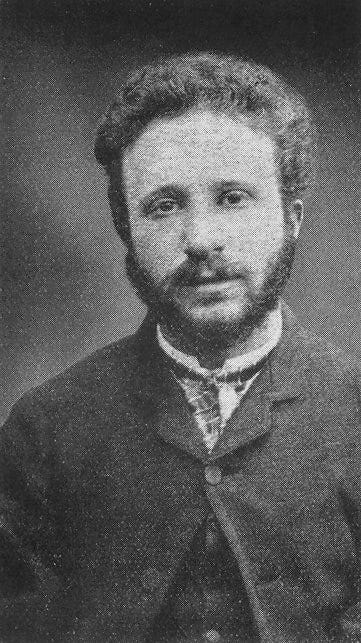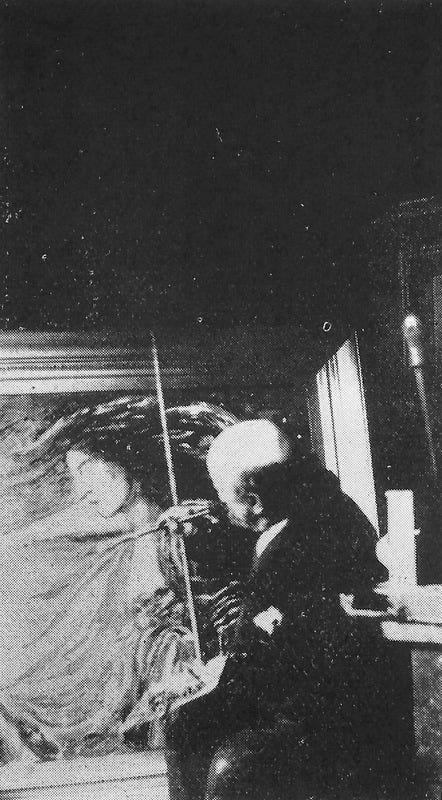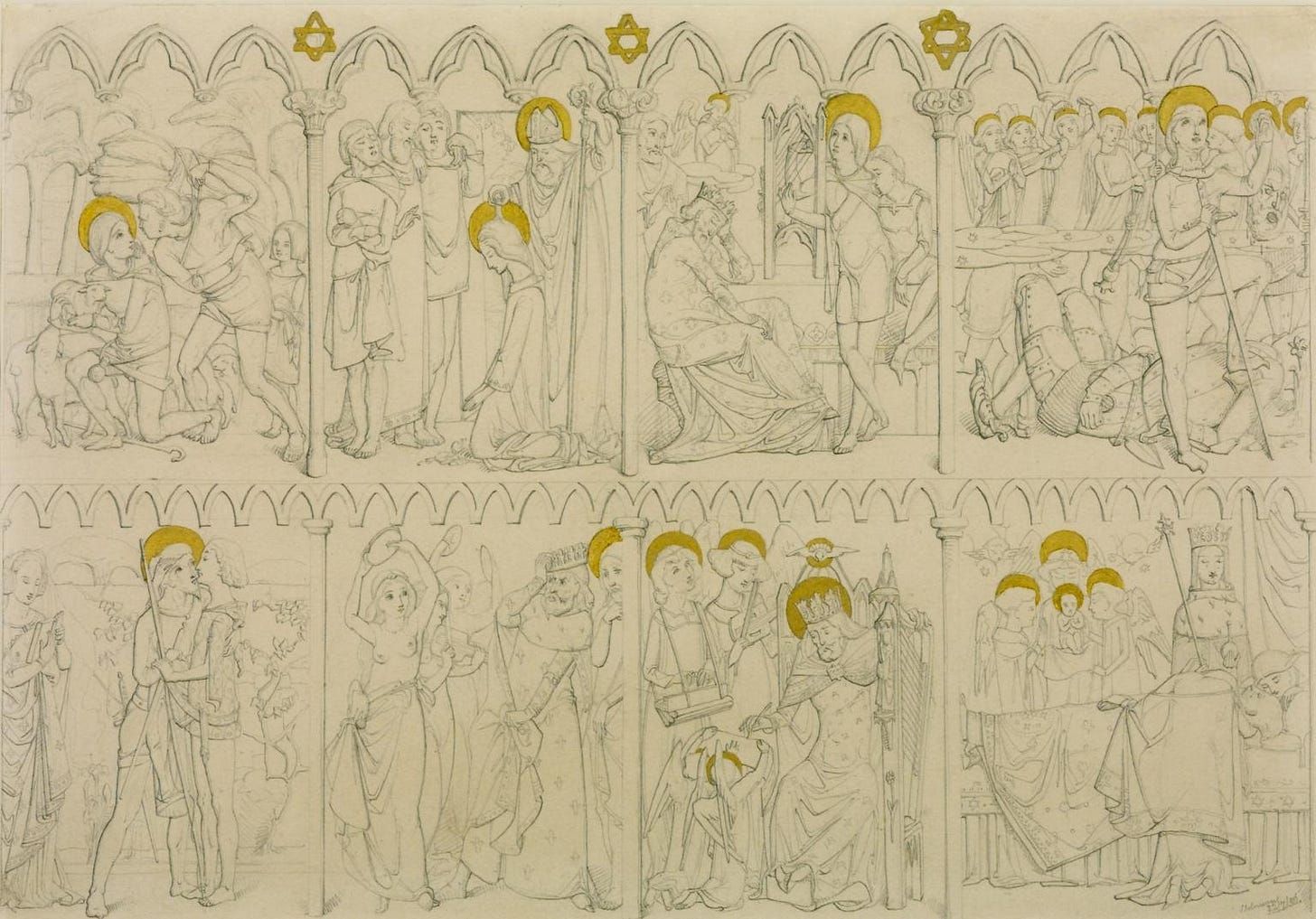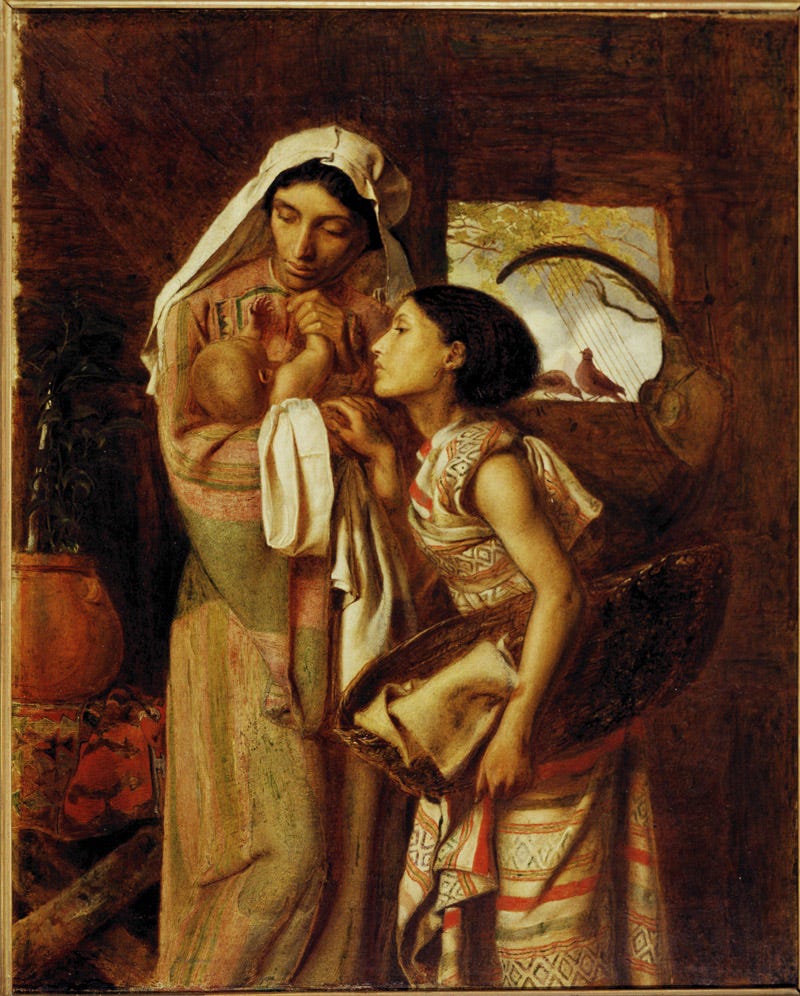As a third year in my degree, I am writing a dissertation to complete my course. I spent a long time trying to figure out what I wanted to discuss, going around to many different ideas. My final draft is due in just about 2 week’s time (now only 2 days as I type this up), and it has certainly been a long haul. However, I am extremely passionate about this topic, this one man, and I want more people to hear about him. Simeon Solomon.
Why haven’t I ever heard of him?
I have photos in my camera roll that mark the exact day I first heard of S.S. I am a passionate enjoyer of angels and angelic depictions of art. One of my favourite artists in this vein is the Pre-Raphaelite Edward Burne-Jones. At first, I was going to go down this route, and was at the library doing some preliminary research one early February morning. This was when I picked up Memorials of Edward Burne-Jones. I am amazed that I happened along this passage at all, because even the introduction, written by John Christian, he comments on the surprising lack of characters in the biography (which was written by Burne-Jones’s wife, Georgiana) who were know to be close to EBJ.
“Nor, for that matter, does Oscar Wilde [appear], although his friendship with Burne-Jones is well documented. This may be for obvious reasons, but Georgie was no prude; she mentions Simeon Solomon, going out of her way to stress that he was ‘a friend of mine as well as Edward’s’” - Introduction p. xvii
This of course intrigued me. I am familiar with Wilde, being interested in queer history for some time now, but this second name was new to me. So I did what every person my age would do, and ran to Google.
Simeon Solomon (9 October 1840 – 14 August 1905) was a British painter associated with the Pre-Raphaelites who was noted for his depictions of Jewish life and same-sex desire…
…reads the introductory paragraph of his Wikipedia page. My dear reader, I was hooked. I am fortunate that one of my art history professors is great interested in— to the point of a whole module being dedicated to it— Pre-Raphaelite studies. I found some books on Solomon, as well as his mentions in other books, and began investigating further.
A student named Rupert Brooke, writing to a friend, gave this brief summary of his life.
“Did you ever hear of S. Solomon, painter? He died the other day, and I read an article about him in the Westminster. He was a delightful painter for the 1850-1870- about; but he succumbed to drink etc., and became ‘impossible.’ He spent his last twenty years selling matches, etc. He died in the gutter…. Why haven’t I ever heard of him?” - from Richard Dellamora’s Masculine Desire: The Sexual Politics of Victorian Aestheticism p. 170
Unknown to this young author is a missing section of Solomon’s biography, and a turning point in his life.
On February 11, 1873, Simeon Solomon and a man named George Robberts were arrested in a public lavatory with their pants down (metaphorically and … well, physically). The eventual charge was for ‘unlawfully attempt[ing] felinously to commit the abominable crime of buggery.’ This was the end of Solomon’s career as a public-facing artist, and is likely why round friend Rupert Brooke, as well as we modern audiences, have never heard of him. However, he did not stop making art, and maintained active creation in specific circles up until his death in 1905, which few until recently have recognised.
The Rising Genius
I have no way to express just how much I love S.S’s work. Clearly I have passion for it, if I have been researching him and his story non-stop for over a year now (and intend to continue). Not only do I find his work interesting, but his life as well. There is a soft spot in my heart for queer historical figures. Simeon and I had this in common, if his 1856 work Eight Scenes from the Story of David and Jonathon and subsequent interest in King David as a biblical figures says anything.
His first big work, Mother of Moses (1860), is an interesting study in racial depictions and biblical art, one of the topic I touch on more in-depth in my dissertation. From early on his works were heralded as great, and he was seen as an artist with great potential by many of the artists he looked up to, like Dante Gabriel Rossetti and Burne-Jones.
The Clever, Touching, Tragic
My favourite era of Solomon’s works are those from his later career, pre- and post-arrest. This was when he was following in the footsteps of his contemporaries towards the Aesthetic movement, but was also beginning to explore queer narratives more directly.
Here is where I get too close to copying my favourite section of my dissertation, but I cannot leave these works alone. The image first drawing me to Solomon’s work was his 1865 drawing entitled The Bride, Bridegroom, and Sad Love. The story here, I feel, is quite straight forward, but I want to provide some additional fodder. The running joke of ‘they were just friends’ is one we all know, that of historical erasure of likely queer relationships hidden behind the thin veil of friendship. However, within the realm of achillean (male-male) relationships, another element must be considered
We Embraced like Sordello and Virgil
Homosociality is a rather outdated concept in modern society. Close friendships between men have never been able to secape the confines of homophobia, but before sexual acts and romantic intentions were combined with identity, the closeness of men took on a very different form. Eve Sedgwick’s work Between Men introduces this concept, working off of Foucault’s analysis of desire as a social construct. I have had entire lectures dedicated to this idea. It shapes ever argument of my dissertation. And the real pain is that we have so little information from Solomon’s life to be able to know where on this line a work like Sad Love may fall. Thus, this drawing could be commentary on homosocial bonds, it could be a retelling of the biblical story of the Song of Songs, or it could be commentary on Solomon’s loss of a lover due to being replaced with the matrimonial love of a woman. I hope to one day dig deeper into these theories. I want to understand Solomon’s life, how he handled living and loving in a world not made for him. I feel a connection to him, in that sense.

Beloved of me
I started writing this essay two weeks before my deadline, needing a break from the heavy confines of academic writing, wanting to reconnect to why I love this topic so much, and hoping to share his story with others. Simeon Solomon makes me cry on a weekly basis. Wendell Stacy Johnson says that though many pitied him, Solomon himself never wanted to be seen as a tragic victim. So I try to think of that when I look at the four photographs of the artist I have found; two young, two old. He outlived so many of his friends, both his artist siblings, and arguably his career. But the interest of one man in the 1960s brought forth his story, and more have looked at him since. I cry not for Solomon’s life, but for the fact that I will never be able to tell him just how much his work and life means to so many others.
He fought and lived and created, so we will fight and live and create too.











Same as Gabe below, I had never heard of Salomon, but your article really makes me want to discover more about his work! Thanks for sharing
Thank you for sharing! I have never heard of Solomon, despite enjoying Pre-Raphaelite work- and you have completely sold me. A lot of queer coded work from that time seems to have been scrubbed from mainstream art history.
Definitely would love to see more content like this on Substack, super enlightening! (Hope the essay went well!)